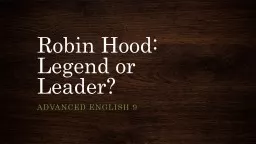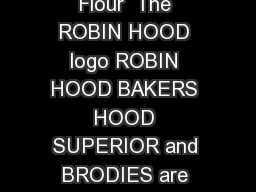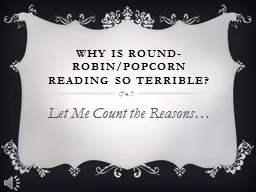PPT-Robin Hood:
Author : jane-oiler | Published Date : 2017-08-21
Legend or Leader Advanced English 9 The Middle Ages The Myth Modern assumptions include of knights in shining armor lavish banquets wandering minstrels kings queens
Presentation Embed Code
Download Presentation
Download Presentation The PPT/PDF document "Robin Hood:" is the property of its rightful owner. Permission is granted to download and print the materials on this website for personal, non-commercial use only, and to display it on your personal computer provided you do not modify the materials and that you retain all copyright notices contained in the materials. By downloading content from our website, you accept the terms of this agreement.
Robin Hood:: Transcript
Download Rules Of Document
"Robin Hood:"The content belongs to its owner. You may download and print it for personal use, without modification, and keep all copyright notices. By downloading, you agree to these terms.
Related Documents














